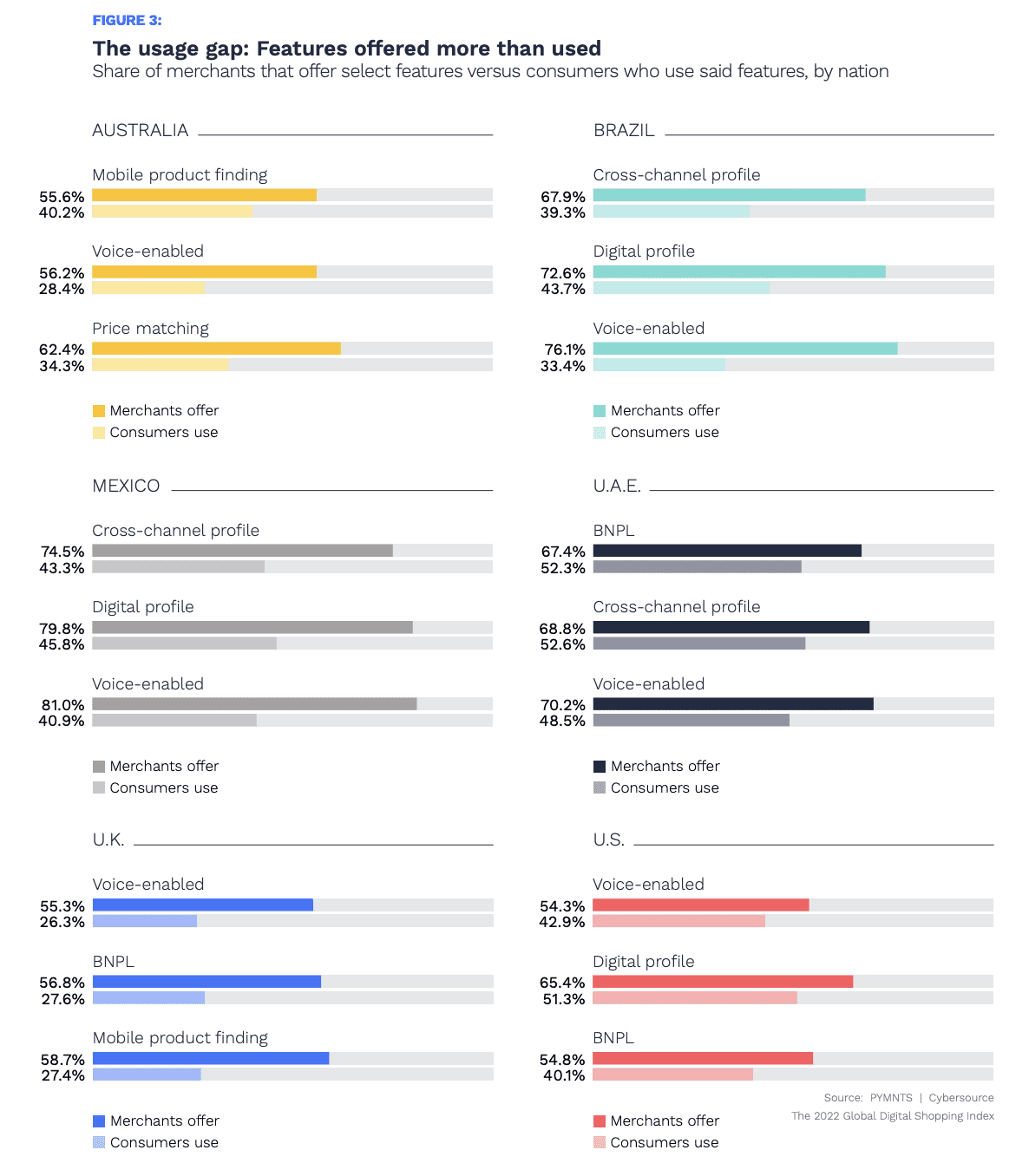
Restaurants on the leading edge of voice commerce may have to expect consumer hesitancy.
Research from PYMNTS’ The 2022 Global Digital Shopping Index: The Digital Transformation of Retail and the Consumer Shopping Experience, created in collaboration Cybersource, which surveyed 13,000 consumers and 3,100 merchants across six countries, revealed that merchants in all of these countries are far more likely to offer voice-enabled purchases than their customers are to use them.
For more: Six Country Study Confirms Mobile Phone Is Modern Shopping’s Must-Have
In the United States, for instance, 54% of merchants offer these features, and 43% of consumers use them. In Brazil, meanwhile, the gap is even wider, with 76% of merchants offering them and 33% of consumers using them.
A number of restaurants are implementing voice commerce technology to reduce the labor needed to take orders, from enabling order placement through smart home devices to setting up artificial intelligence (AI) ordering systems at the drive-thru. McDonald’s, for instance, is working with IBM to speed up the development and launch of its Automated Order Taking (AOT) technology. BurgerFi, a North Palm Beach, Florida-based fast-casual chain with around 140 physical and virtual locations, announced in December that it will be launching in-car ordering in 5G-enabled cars over the summer.
See also: McDonald’s Teams With IBM to Super-Size Drive-Thru Lane Tech
Read more: New Ordering Technology Extends the Drive-Thru Beyond the Lane
“More and more when we watch people interact with their devices, it’s voice,” Portillo’s Senior Vice President of Marketing and Off-Premise Dining Nick Scarpino told PYMNTS in an interview. “It’s sometimes the primary way that people are interacting with their devices.”
More details: Portillo’s Reimagines Its Restaurants for the Mobile-Order Future
Additionally, research from PYMNTS’ 2021 How We Eat Playbook, created in collaboration with Carat from Fiserv, which drew from a survey of a census-balanced panel of more than 5,200 U.S. consumers, found that 20% of consumers say they are “very” or “extremely” interested “in using their voices to buy food and groceries. Moreover, the study revealed that consumers who have shifted to ordering food and groceries online more often than they did pre-pandemic are more than twice as likely to express interest in using voice commerce technology going forward.
See also: 182M Consumers Now Use Digital Channels to Shop and Pay for Food
“As you start to move forward into restaurants … [voice commerce] gets a little bit more complex,” Fiserv vice president of Global Digital Commerce Scott Mackay told PYMNTS in a December interview, noting that with all the additions, substitutions and individual requests that come with a restaurant order, these purchases can be more difficult to process than buying a single, non-variable item. “We found that in voice commerce, the simple, repeat orders are some of the easiest … but restaurant orders can be somewhat challenging when you go beyond the simple coffee orders and those kinds of things.”
Related news: Restaurants, Grocers Embrace Voice, Contextual Commerce to Thrive in an Omnichannel World
